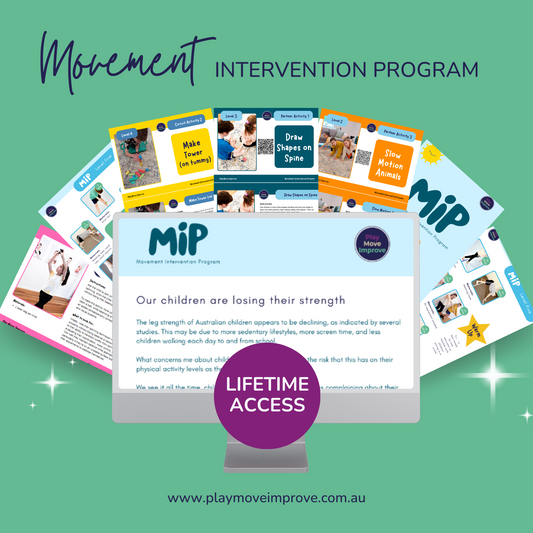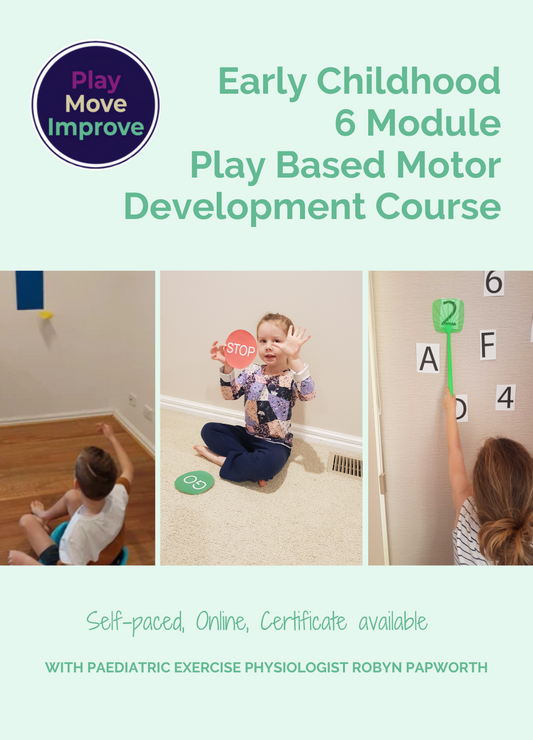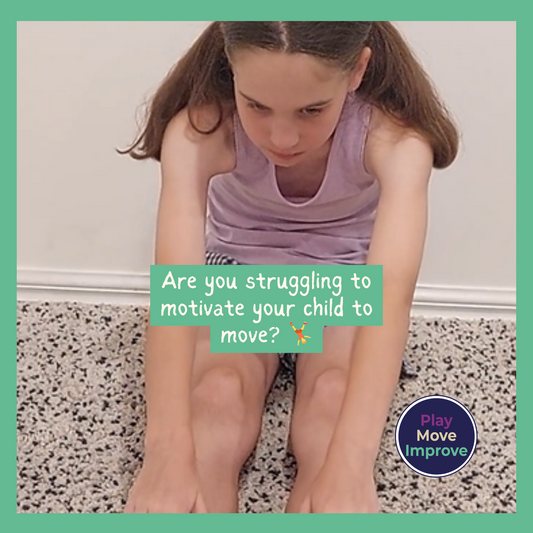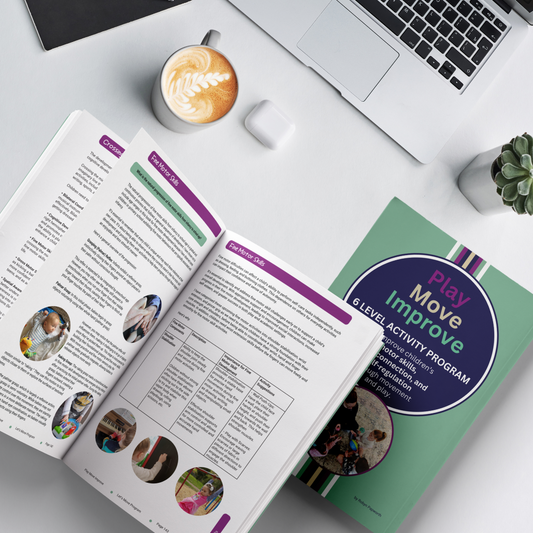Most babies will start crawling between the ages of 8 months to 12 months. Babies will often learn to crawl by first learning to creep (army crawl).
Babies then start to come up on to their hands and knees and rock their pelvis back and forth.
As babies learn how to shift their body weight forward while rocking, babies may then start to apply pressure to their foot against a couch or parent's hand. This 'push off' technique propels the babies body forward. After hours of practice and trial and error the baby starts to learn how to crawl.
What's the big deal about crawling?
Imagine dividing the left, right, top, and bottom sections of your body in to moving quarters. Crawling uses each quarter of your body as you move your opposite hand (top right) to knee (bottom left). To be able to read from a whiteboard, our left and right eye need to be able to work together to move from the left hand side to the right hand side of the whiteboard.
Crawling is great for visual tracking because when we crawl we look down at the floor to crawl around obstacles, then up at our parent or sibiling as they call out our name, then look back down at the ground to crawl again. Some researchers have found that a baby visually tracks more when crawling than compared to sitting, standing, or walking, and this visual tracking practice has been linked to literacy (reading) performance.
Furthermore, crawling has a positive impact on fine motor skills such as handwriting and scissor use because when we hold a piece of paper to write or cut out a shape, our left and right hand need to work together so that one hand keeps the paper still while the other hand cuts the paper smoothly. If we skip the milestone of crawling, or we don't achieve enough hours of crawling, the brain sometimes has difficulty coordinating both hemispheres of the brain at the same
time. As a result children may find it difficult to read from a whiteboard without moving their torso, or may find it challenging to hold a piece of paper still while cutting out shapes with scissors.
How does crawling develop other important motor skills?
- Core strength improves as the body is held up off of the ground against the force of gravity.
- Shoulder stabilisation improves as body weight is placed through the arms. Shoulder stabilisation is needed for handwriting.

- As the child holds their body above the ground, their hands and wrists are in wrist extension position, an important wrist position for handwriting endurance. Read more here.
- Pelvic stabilisation improves as the child holds their bottom up against the force of gravity. Pelvic stabilisation is important for core strength, balance, kicking, jumping, etc.
- Visual tracking refers to the ability of our head and eyes to work together so that we can move our head and eyes to follow a moving object, or keep our head still to read.
The most important thing to read in this article is this....
It is never too late to learn how to crawl.








